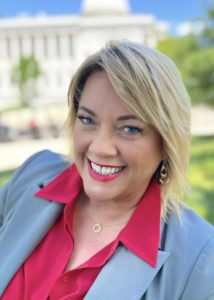
Late last month, the Environmental Protection Agency reopened the finalized reregistration of atrazine. The EPA proposes an extremely low ecological level of concern value for atrazine of just 3.4 parts per billion, down from the scientifically proven 15 parts per billion, according to Gary Marshall, Triazine Network Co-Chair and retired Missouri Corn Growers Association CEO.
“In 2019, the EPA agreed to re-register the product. And now the new administration came in two years after the fact because of a lawsuit generated by some of the anti-agricultural organizations around the country, sued the EPA over the reregistration, and the EPA did something unprecedented,” he said. “They decided to go back and reopen what we thought was already a closed reregistration process.”
The issue from the lawsuit specifically looks at the impact of atrazine on aquatic life standards.
“That means algae and fungus, things like that, that are in streams that shouldn’t be there anyway,” he said. “So, what the EPA has done is proposed a new set of guidelines, they’ve opened up a new comment period, and we’re going to go back, and we’ve already reviewed what we sent in before, we’re going to do it again, and hopefully get EPA to reconsider this unprecedented decision to reopen the registration process.”
Marshall says the proposed action, if made final, will result in new highly restrictive label mitigation measures on atrazine, and would be costly to farmers.
“Well, the switching cost to move to a different product would be about $42 an acre. Based off of what the EPA has said, all of the major corn-producing areas within the Midwest would be limited on the amount of atrazine that they could use in conjunction with other products or just using atrazine by itself, almost making it totally ineffective,” he said. “So, for a 1,000-acre corn farmer, that’s over $40,000 in increased costs, because to switch to a different product would mean a higher cost and also less efficacy.”
Marshall says the Network is asking farmers to submit comments to the EPA.
“The Network has been in place since 1994. And our whole aim is to keep this product in the marketplace,” he said. “The science is on our side, if they’ll just follow the science and the real world, they’ll do the right thing. So, we’re going to fight it, we’ve got until September 6. We’re asking farmers to make comments to the docket at EPA and you can find out all you want to know about this at www.fightepa.com. You need to make those comments before September the sixth.”
This story was contributed by the NAFB.
Listen to Sabrina Halvorson’s program here.

Sabrina Halvorson
National Correspondent / AgNet Media, Inc.
Sabrina Halvorson is an award-winning journalist, broadcaster, and public speaker who specializes in agriculture. She primarily reports on legislative issues and hosts The AgNet News Hour. She was recently named the 2024 Farm Broadcaster of the Year by the National Association of Farm Broadcasting and serves as a Council Member on the World Agriculture Forum. Sabrina is a native of California’s agriculture-rich Central Valley and now divides her time between California and North Dakota.









